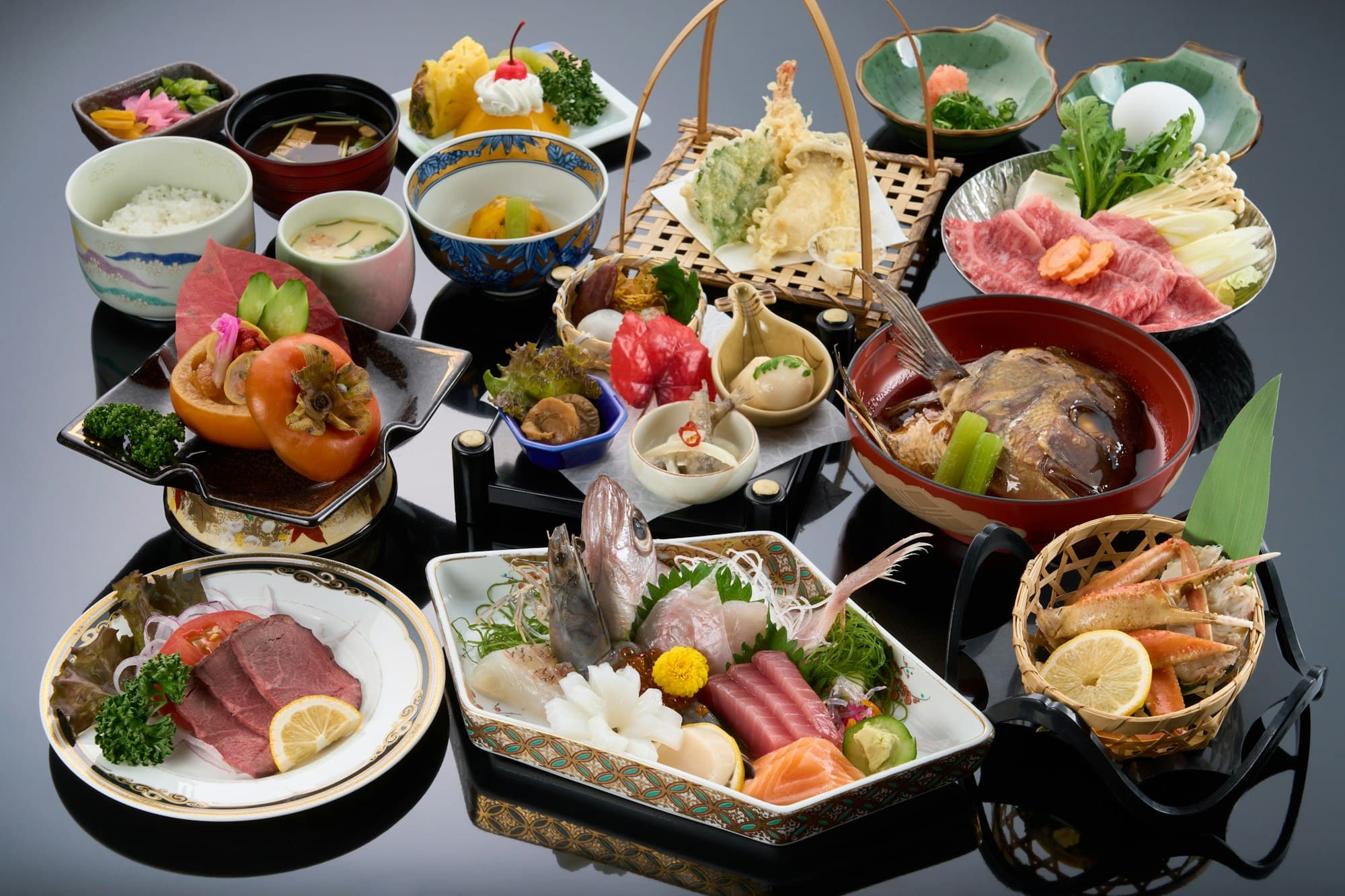Can You Prepare an Authentic Japanese Kaiseki Meal at Home?

Kaiseki, an elegant, multi-course meal, is the epitome of Japanese haute cuisine. This traditional style of dining is steeped in centuries-old customs, rituals, and culinary techniques. The question you may ask yourself is, "Can I prepare an authentic Japanese Kaiseki meal at home?" The answer is a resounding yes, with a caveat. You must dedicate time, patience, and most importantly, appreciation for the culinary art form. In this article, we will delve into the intricate world of Kaiseki, its components, and how you can recreate it at home.
What is Kaiseki?
Before we start preparing our Kaiseki meal, let’s first understand what it actually is. Kaiseki is a traditional multi-course meal that evolved from the tea ceremony rituals in Japan. It is often considered the height of sophistication in Japanese cuisine. Each dish is meticulously made with seasonal ingredients and presented beautifully. Moreover, it’s not just about the food; each course is intended to be enjoyed in harmony with the seasons and the natural world around us.
A lire aussi : What Techniques Are Needed to Perfect a Classic Italian Carbonara with Guanciale?
Kaiseki meals usually consist of a series of small, seasonally-themed dishes crafted with great precision and attention to detail. A full kaiseki experience can involve more than a dozen different types of food, each served in its own unique dishware, often ceramic. The dishware, like the food, reflects the season and sets the tone for the course to come.
The Components of a Kaiseki Meal
A Kaiseki meal is far more than a simple dinner; it’s a ceremonial dining experience. It consists of several courses, each with a specific purpose and order. While variations exist depending on the chef and the restaurant, a traditional Kaiseki meal generally includes the following courses:
Cela peut vous intéresser : How to Assemble a Luxurious Chocolate Ganache Tart with a Hazelnut Crust?
-
Sakizuke (Appetizer): This is an equivalent to an amuse-bouche in French cuisine. It’s a small dish that serves as a prelude to the meal.
-
Hassun (Seasonal Theme): This course sets the seasonal theme. It typically includes one kind of sushi and several smaller side dishes.
-
Mukozuke (Sashimi): This is a seasonal sashimi dish.
-
Takiawase (Simmered Dish): Vegetables served with meat, fish or tofu; the ingredients are simmered separately.
-
Futamono (Soup Course): A "lidded dish"; typically a soup.
-
Yakimono (Grilled Course): Usually a grilled fish.
-
Suzakana (Vinegared Dish): A small dish used to cleanse the palate, such as vegetables in vinegar.
-
Hachizakana (Hot Pot Course): Seasonal ingredients cooked in a clay pot.
-
Rice Course: This course includes pickles and a bowl of miso soup.
-
Mizumono (Dessert): A seasonal dessert; may be fresh fruit, a sweet, or even a slice of cake.
Preparing a Kaiseki Meal at Home
While it might seem daunting to prepare a Kaiseki meal at home, it is possible with some planning and dedication. Remember, Kaiseki is about the experience of eating, not just the act itself. It’s about cherishing the season, the ingredients, and the process. Below are some tips on how to approach this.
Sourcing Ingredients
One of the key facets of Kaiseki is the use of seasonal, local ingredients. As a home cook, finding these ingredients may present a challenge. However, you could substitute with what’s available and in season in your region. For the dishes that require more traditional Japanese ingredients, you might want to visit your local Asian market or look for online stores that deliver. Remember, the freshness of ingredients is of utmost importance in Kaiseki.
Cooking and Presentation
Culinary skills take center stage in Kaiseki, as each dish should be cooked to bring out the best of its natural flavors. This might be a challenge if you’re unfamiliar with Japanese cooking techniques. However, there are a plethora of resources available online, including recipes and video tutorials, which can guide you through the process.
As for presentation, each dish should be a visual delight. It’s not only about taste, but also about the overall aesthetic. This includes the dishware and table setting. Traditional Kaiseki uses a variety of ceramics, lacquerware, and glassware, often handcrafted, to serve different dishes. While these might not be readily accessible, you can use what you have at home, focusing on the color, shape, and size suitability for each dish.
The Art of Kaiseki Dining
To fully appreciate Kaiseki, you and your guests should embrace it as a dining experience rather than just a meal. This means taking into account the setting and ambiance.
Setting the Atmosphere
Creating the right atmosphere is crucial. The location should be quiet and serene, with minimal distractions. To elevate the experience, you might want to add some traditional Japanese elements like tatami mats, a low dining table, and cushion seats.
Pairing with Drinks
Pairing your Kaiseki meal with the right drink is also important. Traditionally, a Kaiseki meal starts with a cup of sake and is followed by green tea towards the end. However, you might want to pair each course with a different drink if you wish, such as different types of sake or other Japanese beverages.
Remember, Kaiseki is not about pretentiousness or extravagance. It’s a culinary art form that celebrates nature, seasons, and simplicity. While preparing a Kaiseki meal at home might require effort and time, the experience of dining in harmony with the natural world around you is undeniably rewarding. Enjoy the process, appreciate the ingredients, and, most importantly, savor each bite.
The Influence of Kaiseki on Japanese Cuisine and Around the World
Kaiseki is not just a traditional Japanese meal; it’s a cornerstone of Japanese cuisine. Kaiseki, or Kaiseki Ryori as it is known in Japan, has had a significant influence on how meals are prepared and served, both in Japan and internationally. According to the Michelin Guide, several Kaiseki restaurants in Japan have been awarded Michelin stars, a testament to the high culinary standards the meal represents.
The influence of Kaiseki extends beyond Japanese borders. Many renowned international chefs, including Chef Saito, have incorporated elements of Kaiseki into their cooking. The meticulous attention to detail, the emphasis on seasonal ingredients, and the harmonious blend of flavors have inspired chefs worldwide. Kaiseki cuisine has made its mark on global gastronomy, being celebrated in several Michelin-starred restaurants outside Japan.
Kaiseki’s influence also extends to the home kitchen. More and more home cooks around the world are trying their hand at preparing traditional Kaiseki meals at home. While not everyone can replicate the precision of a seasoned Kaiseki chef, anyone who appreciates the artistry of food can learn to prepare a simplified version of a Kaiseki meal to enjoy its spirit.
The influence of Kaiseki also extends to the aesthetics of dining. The emphasis on presentation, from the dishware used to the arrangement of food on the plate, has elevated the dining experience. Even if you’re not enjoying a traditional Kaiseki meal, taking the time to present your food beautifully can enhance your enjoyment of the meal. It’s a concept that’s being embraced by diners and chefs alike, from casual dining to gourmet establishments.
The Kaiseki Experience: Beyond the Meal
Stepping into a Kaiseki restaurant, you’re not just there for a meal; you’re there for an experience. From the moment you cross the threshold, you are transported to a different world. The decor, the ambiance, and the service all contribute to creating a unique dining experience.
Going beyond the food, Kaiseki is about appreciating the beauty of the moment, of the season, of the ingredients used, and the effort put into preparing each dish. This concept extends to the tea ceremony, a significant part of a traditional Kaiseki meal. The tea ceremony is not just about drinking tea; it’s about mindfulness, respect, and appreciation. It is a ritual that symbolizes the Japanese way of life and their deep respect for nature and the changing seasons.
Just like the tea ceremony, each course in a Kaiseki meal is an opportunity to pause and savor the moment. Each dish is a testament to the chef’s skill and passion, and each bite is an explosion of flavor that tells a story of its source, be it the sea, the land, or the forest.
Conclusion: Embracing the Kaiseki Way
At first glance, preparing a traditional Japanese Kaiseki meal at home seems an ambitious goal. It requires time, effort, and a deep understanding of the philosophy behind Kaiseki cuisine. However, with a bit of patience, anyone can recreate the spirit of a Kaiseki meal.
The key to enjoying a Kaiseki meal is to embrace its essence – the celebration of the seasons, the respect for ingredients, and the artistry of presentation. Even if you can’t prepare a full Kaiseki course, incorporating a few elements of Kaiseki into your daily meals can make dining a more pleasurable experience.
Learning to savor each bite, to appreciate the aesthetics of food, and to respect the ingredients and the process of preparing a meal – these are the foundations of Kaiseki and are principles that can enhance our everyday dining experience.
In conclusion, while the art of Kaiseki is steeped in centuries-old traditions and may seem daunting to recreate at home, it represents an approach to food that is universally appealing. At its core, Kaiseki reminds us that food is more than just sustenance. It is a form of art, a celebration of seasons, and a testament to the skill and passion of the chef. So, whether you’re a seasoned home cook or just a beginner, why not try preparing a Kaiseki-inspired meal at home? You might discover a new appreciation for the art of dining.
